There is no such thing as a hopeless California driving under the influence (DUI) case. No matter what the allegations against you are, there will always be a promising DUI defense strategy that you can try.
The prosecution may allege that you drove with a blood alcohol concentration (BAC) of 0.20% (well over the legal limit of 0.08%). Or they may claim that your impaired driving caused an accident, or that you were so intoxicated you could barely make it through a field sobriety test.
Even if these sorts of allegations are true–and often they aren’t–there are still a number of DUI defenses that could persuade the prosecutor to agree to a reduced charge or even dismiss the charges altogether.
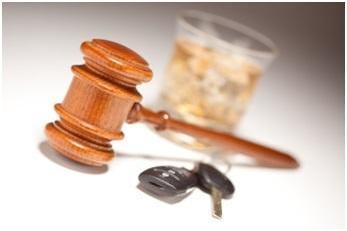
As top Los Angeles DUI defense lawyer John Murray1 explains,
“I’ve seen people plead guilty to DUI because they felt the evidence against them was insurmountable. But in my experience, it’s a very rare case where the evidence is insurmountable. Police mishandle DUI investigations constantly, and prosecutors try to take advantage of scared defendants. In almost every case a defendant’s best move is to consult with an experienced defense attorney rather than trying to go it alone.”
In this article, our California DUI defense lawyers will summarize twenty DUI defenses that can help you beat your California DUI charges:
- 1. DUI Breath Test Errors
- 2. Mouth Alcohol as a DUI Defense
- 3. GERD, Acid Reflux and Hiatal Hernia: Medical DUI Defenses
- 4. Ketosis as a Result of Diabetes or Low-Carb Diets
- 5. Rising Blood Alcohol as a DUI Defense
- 6. DUI Blood Test Errors
- 7. Title 17 Violations
- 8. Lack of Probable Cause for a DUI Stop
- 9. Arresting Officer Didn’t Read Miranda Rights
- 10. Innocent Explanations for Physical Signs of DUI
- 11. Inaccuracy of Field Sobriety Tests
- 12. Simple Bad Driving–Not DUI
- 13. BAC Over the Legal Limit Not the Same as DUI
- 14. Inherent Error Rates for DUI Chemical Testing
- 15. DUI Sobriety Checkpoint Not in Compliance with the Law
- 16. Radio Frequency Interference (RFI) as a DUI Defense
- 17. No Signs of Mental Impairment Mean No DUI
- 18. BAC Doesn’t Accurately Reflect Impairment
- 19. No Driving
- 20. Police Misconduct in DUI Cases
If you have additional questions or would like to speak with one of our California DUI defense attorneys, we invite you to contact us at Shouse Law Group.
1. DUI Breath Test Errors
California DUI breath tests are subject to a wide range of errors. These include (but are not limited to)
- instrument malfunction,
- improper handling by the police,
- your physiological conditions (such as GERD or your diet, both of which are discussed below), and even
- outside environmental factors (such as radio frequency interference, which is also described below).
While DUI breath testing is the most common way to measure one’s BAC, it’s not always an accurate one.
This is because a DUI breath test doesn’t directly measure the amount of alcohol in your blood. Instead, it measures the amount of alcohol present in your breath and then converts that amount to determine the amount of alcohol in your blood.2
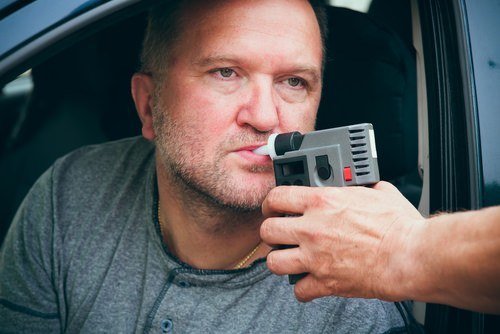
As a result, DUI breath testing often generates an erroneously high BAC reading. Understanding of how this happens can be the basis of a successful DUI defense strategy.
2. Mouth Alcohol as a DUI Defense
“Mouth alcohol” is another important DUI defense.
DUI breath testing instruments are designed to capture a sample of breath from your deep lung tissue (otherwise known as “alveolar air”). But the breath test instrument can capture “mouth alcohol” rather than simply alcohol in your alveolar air in the following situations:
- dental work trapped small amounts of alcohol-soaked food in your teeth,
- you burped or regurgitated after having had a small amount to drink,
- you used a mouthwash or breath spray containing alcohol,
- you used chewing tobacco, or
- you suffer from GERD, acid reflux or heartburn (discussed below).3
As a result, mouth alcohol can trigger a falsely high BAC reading on a California DUI breath test. If this happens to you, you can challenge the breath test results as part of your DUI defense strategy.
3. GERD, Acid Reflux and Hiatal Hernia: Medical DUI Defenses
- Gastroesophageal Reflux Disease (more commonly referred to as “GERD”),
- acid reflux,
- heartburn, and
- a hiatal hernia,
are all recognized medical conditions that create possible mouth alcohol situations. This is because these conditions produce a flow of acid that travels from the stomach into the mouth.
When this occurs just prior to or during a DUI breath test, the alcohol that travels from your stomach to your mouth disguises the deep lung air that the breath testing instrument is intended to measure.4
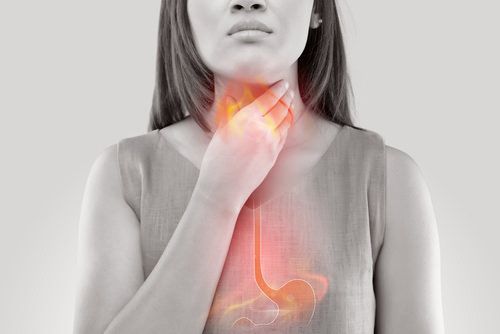
As a result, GERD, acid reflux and heartburn can all be defenses to California DUI charges.
4. Ketosis as a Result of Diabetes or Low-Carb Diets
Ketosis is another subset of the “mouth alcohol” DUI defense.
Bodies that are deprived of carbohydrates turn to stored fat for energy. This process produces ketones, When eliminated from the body through breath and urine, ketones convert into isopropyl alcohol–which DUI breath tesitng machines can mistake for ethyl alcohol (the type we drink).5
Ketosis can be caused by either:
<li id=”fn:”
Diabetes.
So if you are arrested for DUI while on a low-carb diet (like Atkins or Paleo), or if you have diabetes, you will want to explore the option of fighting your DUI charges on this basis.
5. Rising Blood Alcohol as a DUI Defense
Unlike mouth alcohol, the DUI defense of “rising blood alcohol” is relevant regardless of whether you took a DUI breath test or a DUI blood test.
Alcohol takes a certain amount of time (typically between 50 minutes and three hours) to absorb into your system.6
So let’s say you recently finished drinking and got in your car for a short drive. An officer pulls you over, arrests you and takes you to the police station for a DUI chemical test. If your blood alcohol was still rising at the time you were arrested, the chemical test results will show a higher BAC than the one you had when you were actually driving.
Your BAC at the time of your blood or breath test is irrelevant–what is relevant is what your BAC was at the time you drove. An understanding of the concept of rising blood alcohol can form the basis of a defense to California DUI charges.
6. DUI Blood Test Errors
The potential for errors in DUI blood tests is another popular California DUI defense.
Factors that can lead to an inaccurate result on a DUI breath test include
- blood fermentation,
- improper storage of your blood sample, and
- blood contamination.
Your DUI defense attorney can make what is called a “blood split motion” in order to learn more about how your blood test was conducted and your blood sample was stored.7
Depending on the circumstances surrounding the collection and storage of your DUI blood test, your California DUI defense lawyer may be able to have your BAC results excluded from evidence. In many cases this can lead to the dismissal of your DUI charges.
7. Title 17 Violations
Title 17 of the California Code of Regulations sets forth the requirements for
- collecting,
- storing, and
- analyzing
DUI chemical tests.8 These regulations are very specific, and any violation of California’s Title 17 can compromise your BAC results.
This means that if, for example,
- it’s not a trained technician who draws your DUI blood sample, or
- the DUI breath testing instrument that you use hasn’t been calibrated according to code,
your BAC could be excluded from evidence–or at the very least, its accuracy will be called into question. This could be key to a successful strategy to fight your DUI charges.
8. Lack of Probable Cause for a DUI Stop
Before the police can
- stop your car,
- detain you to conduct a DUI investigation, or
- arrest you for a California DUI,
they must have reasonable suspicion or reasonable belief that you are engaged in criminal activity.9 This reasonable belief is a legal standard known as probable cause.
If an officer doesn’t have the necessary probable cause before any of these DUI investigation stages, then any evidence that is obtained from that stage will be suppressed.10 When a judge suppresses evidence, it means that the prosecution cannot use it against you in your DUI case.
As a result, lack of probable cause can be a very powerful DUI defense that often results in reduced or dismissed California DUI charges.
9. Arresting Officer Didn’t Read Miranda Rights
Despite common misperception, Miranda rights aren’t always required in a California DUI arrest.
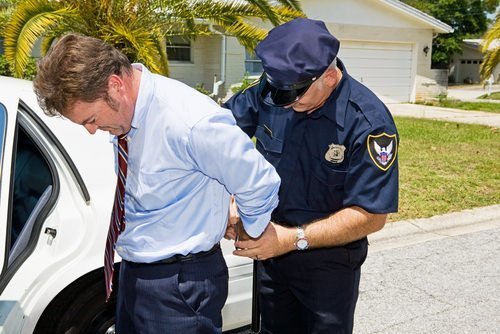
But Miranda rights are required when (1) you have been arrested, and (2) the officer is conducting a custodial interrogation. A “custodial interrogation” takes place when an officer asks you questions designed to solicit incriminating responses after you have been arrested.11
If these conditions have both been satisfied, the officer must advise you of your Miranda rights or risk having any subsequent statements excluded from evidence upon a motion by your DUI defense attorney. Depending on the significance of those statements, their exclusion could result in reduced or dismissed DUI charges.
10. Innocent Explanations for Physical Signs of DUI
Most likely, the officer will claim that you exhibited
- red/watery eyes,
- a flushed face,
- slurred speech,
- an unsteady gait, and
- the odor of an alcoholic beverage on your breath.
Whether or not this description is accurate, the fact is that none of these signs or symptoms necessarily means that you are DUI.
And even if you were drinking, these characteristics don’t in and of themselves indicate that you were under the influence of alcohol and/or drugs. Additionally, innocent explanations such as
- fatigue,
- allergies,
- the sun,
- physical injury, or
- illness,
can explain the physical signs and symptoms that are commonly associated with DUI. Making it clear to the prosecutor that you understand this can help you fight unfair DUI charges.
11. Inaccuracy of Field Sobriety Tests
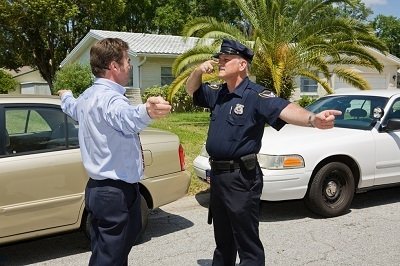
Even the most reliable California field sobriety tests (FSTs) aren’t accurate indicators of alcohol and/or drug impairment. The three tests that have actual data to support their trustworthiness are only 65-77% accurate at detecting impairment–and that’s only if they are precisely administered and scored (which is rarely the case).12
And the same innocent explanations that can account for physical signs of impairment can explain poor performance on FSTs. Additionally, factors such as
- officer-induced intimidation,
- bad weather conditions,
- poor lighting,
- uneven surface conditions, and
- awkward footwear, such as boots, dress shoes or high heels,
can cause a sober individual to “fail” his/her field sobriety tests.
The bottom line is: you and your DUI defense attorney should make sure that the prosecutor is not able to present FST performance as reliable evidence against you in your DUI case.
12. Simple Bad Driving–Not DUI
While the police like to think that all bad drivers must be DUI, we know this isn’t the case. Weaving, speeding, and even erratic driving are often a result of inattention or distraction.
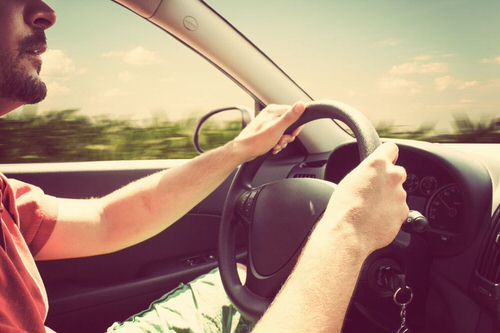
Maybe you were
- eating,
- trying to play a CD,
- working with the music player or navigation device on your smartphone,
- trying to pick up something that dropped, or
- distracted by your passengers.
The reality is that sober people exhibit moments of bad driving just as impaired drivers do. You can build an effective DUI defense strategy–one that many jury members can relate to–around this reality.
13. BAC Over the Legal Limit Not the Same as DUI
Blood alcohol concentration (BAC) is affected by many different factors, not just the actual amount of alcohol in one’s body. These factors include (but are not limited to):
- errors in California DUI chemical testing equipment,
- errors in obtaining your DUI blood, breath, or (when appropriate) urine sample,
- your medical conditions, and
- when you finished drinking alcohol.
We tend to assume that a BAC “over the legal limit” necessarily means DUI. But this is not the case–and it is up to your DUI defense attorney to let the prosecutor and/or jury know this.
14. Inherent Error Rates for DUI Chemical Testing
Even assuming that all testing conditions are perfect, there is still an inherent error rate with California DUI chemical testing. Experts agree that California DUI chemical testing has a +/- error rate of between 0.005% and 0.02%.
As a result, your DUI defense strategy can include challenging BAC results that are between 0.08% and 0.10%–that is, very close to the legal limit of 0.08%.
15. DUI Sobriety Checkpoint Not in Compliance with the Law
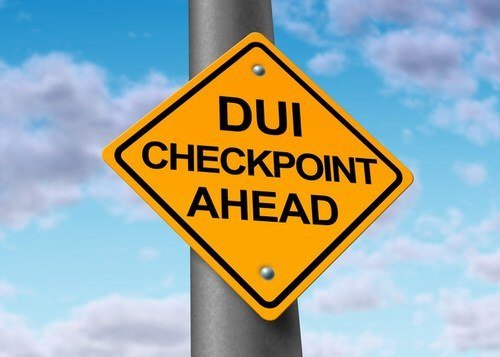
California DUI sobriety checkpoints must adhere to very strict legal requirements. Some examples include:
- having supervising officers organize and oversee the checkpoint,
- making sure that the field officers follow a predetermined formula for stopping cars, and
- publicly advertising the DUI roadblock.13
If these requirements aren’t satisfied, a California DUI defense attorney can effectively challenge your DUI arrest and fight the DUI charges.
16. Radio Frequency Interference (RFI) as a DUI Defense
Radio frequency interference (“RFI”) can cause a California DUI chemical blood or breath test to produce an erroneously high BAC. This is because almost all electronic devices–such as those used to analyze DUI blood and breath samples–are susceptible to RFI or EFI (electromagnetic interference).
The electronic components in these instruments can be affected by nearby radio waves, including those from
- patrol cars,
- the automatic door-unlocking devices found in crime labs,
- cell phones,
- microwaves, and/or
- fluorescent lights.
You can challenge DUI blood and breath testing results that might have been affected by RFI.
17. No Signs of Mental Impairment Mean No DUI
Under California DUI law, there are two types of impairment: mental impairment and physical impairment.

Most of the impairment that officers claim people exhibit during California DUI investigations is physical. Officers routinely testify that those arrested for drunk driving exhibited
- an unsteady gait,
- poor coordination,
- red/watery eyes, and
- slurred speech.
However, experts agree that alcohol and/or drug-related impairment always presents itself in the form of mental impairment first.
This means that if an officer testifies that you displayed physical but not mental impairment, you may be able to challenge allegations that you were DUI under Vehicle Code 23152(a) VC, California’s driving under the influence law.
18. BAC Doesn’t Accurately Reflect Impairment
If a significant discrepancy exists between your BAC and your alleged level of impairment, something is wrong. This may be the case where you either (1) reportedly exhibited no impairment, or (2) exhibited very slight impairment, but had a high BAC.
When this type of situation (sometimes referred to as a “disconnect” DUI case) occurs, the evidence can’t be trusted–something just doesn’t add up. Usually this is a clue that you and your DUI defense attorney should challenge the results of your DUI blood or breath test as part of your DUI defense strategy.
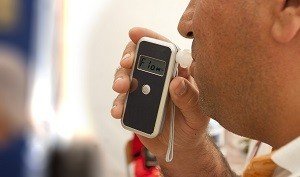
19. No Driving
It isn’t enough for the police to prove you were under the influence. The crime is driving under the influence.
If, for example,
- you were involved in an accident and no one saw you driving the car, or
- the police found you when you were in your parked car,
it will be more difficult for the prosecution to prove one of the key elements of a DUI: that you drove.
Thus, the “no driving” DUI defense should be considered any time the police didn’t actually see you operating the vehicle. And finally…
20. Police Misconduct in DUI Cases
If you can demonstrate police misconduct, then your DUI charges may have to be dismissed–even if you were actually guilty of DUI!
This is because proper police procedures must be followed. For example,
- DUI police reports must be accurate,
- Title 17 procedures must be complied with, and
- courtroom testimony must be truthful.
If these (or any other) conditions are purposely manipulated, evidence that was illegally obtained or fabricated will be suppressed. Depending on how severely this impacts the prosecutor’s case, he/she may choose to reduce or even dismiss your DUI charges–a very positive outcome in your DUI case.
Call us for help . . .

If you or a loved one would like to explore DUI defense options, we invite you to contact us at Shouse Law Group. We can provide a free consultation in the office or by phone.
We have local offices in Los Angeles, the San Fernando Valley, Pasadena, Long Beach, Orange County, Ventura, San Bernardino, Rancho Cucamonga, Riverside, San Diego, Sacramento, Oakland, San Francisco, San Jose and throughout California.
For information about Nevada DUI defenses, go to our article on Nevada DUI defenses.
Legal References:
- Los Angeles DUI defense attorney John Murray is a leading expert in the top California DUI defense. He has extensive experience both in the court systems of Los Angeles County and Ventura County and in California DMV hearings.
- For a detailed discussion of breath testing methodology and science, see People v. McNeal (2009) 46 Cal 4th 1183. See also Jeanne Swartz, Breath Testing for Targeting Hardcore Impaired Drivers, American Prosecutors Research Institute (December 2004).
- American Medical Association’s Committee on Medical Problems — Manual for Chemical Tests for Intoxication (1959). (“True reactions with alcohol in expired breath from sources other than the alveolar air (eructation, regurgitation, vomiting) [i.e., mouth alcohol, a powerful DUI defense] will, of course, vitiate the breath alcohol results…”)
- People v. McNeal (2009), 46 Cal.4th 1183, 1191. (“When a subject blows into a breath-testing machine, the device measures the amount of alcohol vapor expelled into alveolar spaces deep in the lungs [in theory, that is–in practice GERD, acid reflux/heartburn, or a hiatal hernia can prevent this from happening].”)
- University of San Francisco, What are ketones and why do I need to know about them? [supplies context for link between diabetic ketosis and DUI]. See also Lawrence Taylor, Drunk Driving Defense 3d Edition, page 685. (“…the likelihood exists of auto-generated isopropyl alcohol upon the introduction of carbohydrates in the presence of ketosis [common in people with diabetes] and that the Intoxilyzer [DUI breath testing instrument] cannot dependably distinguish ethanol from isopropyl alcohol.”)
- Forcon Forensic Consulting, Alcohol Absorption, Distribution & Elimination [provides context for phenomenon of rising blood alcohol as a DUI defense].
- Vehicle Code 23158(b) VC — Right of DUI defendant to make a blood split motion [can be helpful to DUI defense strategy].
- Title 17 of the California Code of Regulations (“Title 17”), sections 1215-1221 [pertaining to DUI chemical testing].
- See Terry v. Ohio, (1968) 392 U.S. 1, 20.
- Penal Code 1538.5 PC — Motion to return property or suppress evidence [can be made as part of DUI defense strategy when there was lack of probable cause].
- Miranda v. Arizona, (1966) 384 U.S. 436, 444.
- U.S. Department of Transportation “DWI Detection and Standardized Field Sobriety Testing”; NHTSA Student Manual (February 2006): VII-3, VII-6.
- Eight guidelines for a legal California DUI checkpoint were enumerated by the California Supreme Court in Ingersoll v. Palmer (1987) 43 Cal.3d 1321, 743 P.2d 1299. If not followed, these can be used as the basis for an effective defense to California DUI charges.

